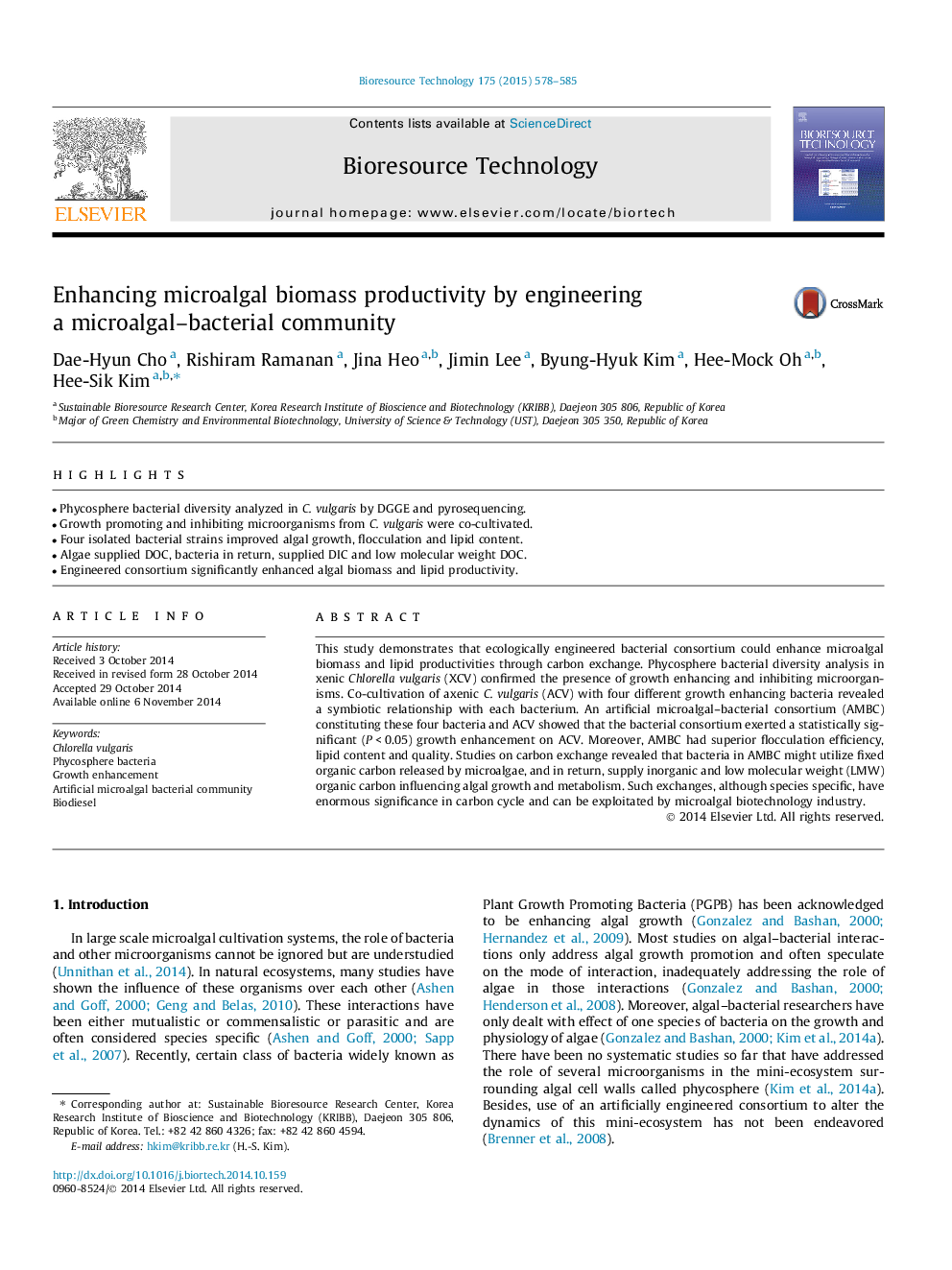| Article ID | Journal | Published Year | Pages | File Type |
|---|---|---|---|---|
| 680310 | Bioresource Technology | 2015 | 8 Pages |
Abstract
This study demonstrates that ecologically engineered bacterial consortium could enhance microalgal biomass and lipid productivities through carbon exchange. Phycosphere bacterial diversity analysis in xenic Chlorella vulgaris (XCV) confirmed the presence of growth enhancing and inhibiting microorganisms. Co-cultivation of axenic C. vulgaris (ACV) with four different growth enhancing bacteria revealed a symbiotic relationship with each bacterium. An artificial microalgal-bacterial consortium (AMBC) constituting these four bacteria and ACV showed that the bacterial consortium exerted a statistically significant (PÂ <Â 0.05) growth enhancement on ACV. Moreover, AMBC had superior flocculation efficiency, lipid content and quality. Studies on carbon exchange revealed that bacteria in AMBC might utilize fixed organic carbon released by microalgae, and in return, supply inorganic and low molecular weight (LMW) organic carbon influencing algal growth and metabolism. Such exchanges, although species specific, have enormous significance in carbon cycle and can be exploitated by microalgal biotechnology industry.
Related Topics
Physical Sciences and Engineering
Chemical Engineering
Process Chemistry and Technology
Authors
Dae-Hyun Cho, Rishiram Ramanan, Jina Heo, Jimin Lee, Byung-Hyuk Kim, Hee-Mock Oh, Hee-Sik Kim,
